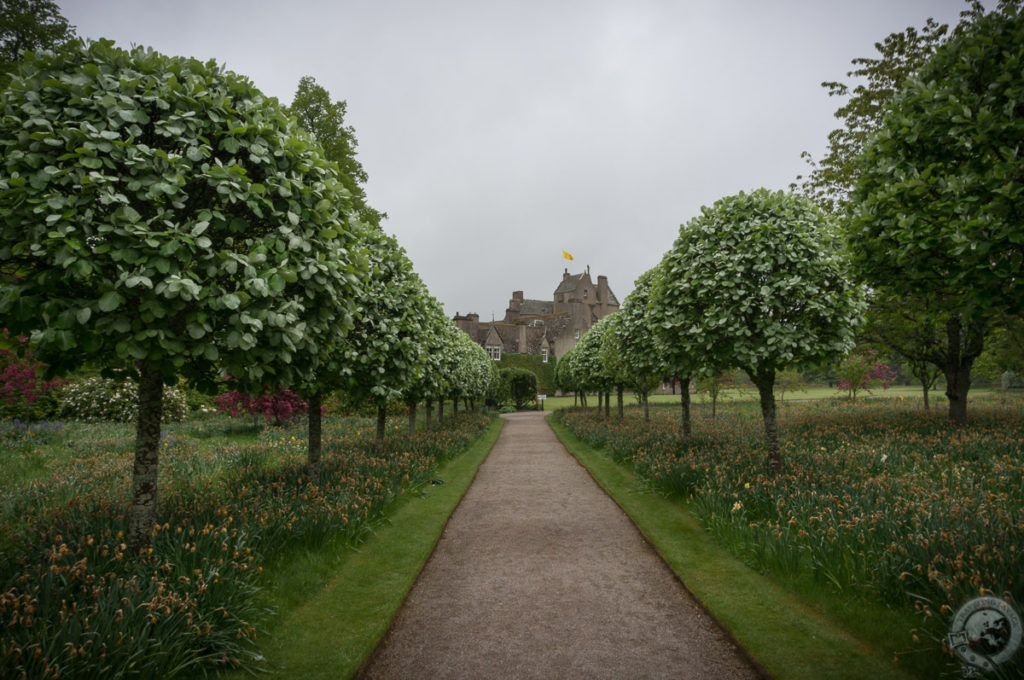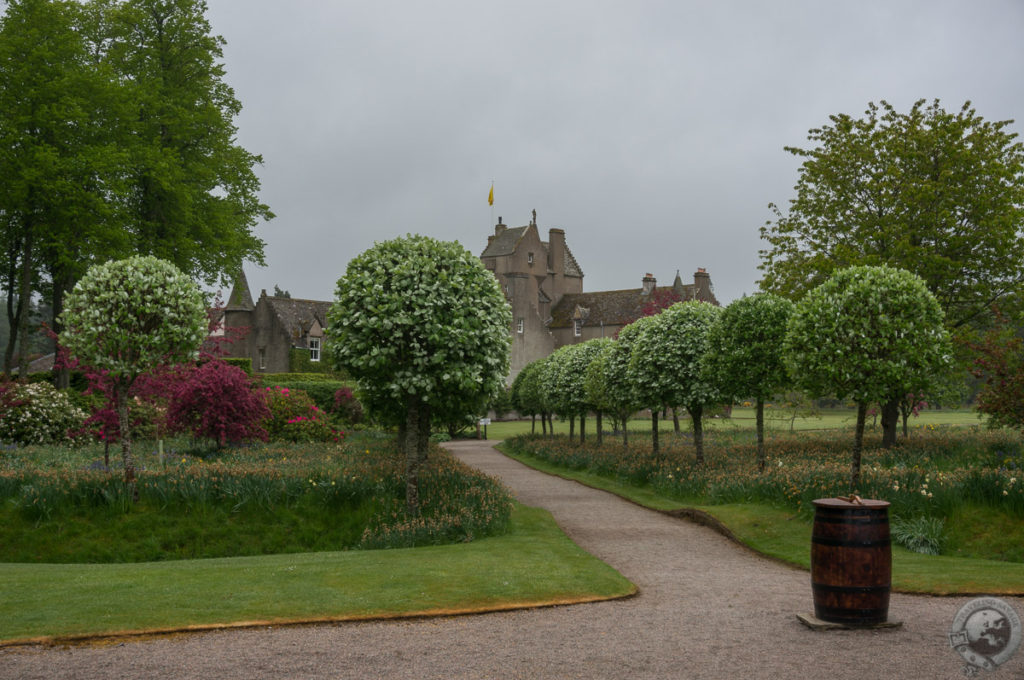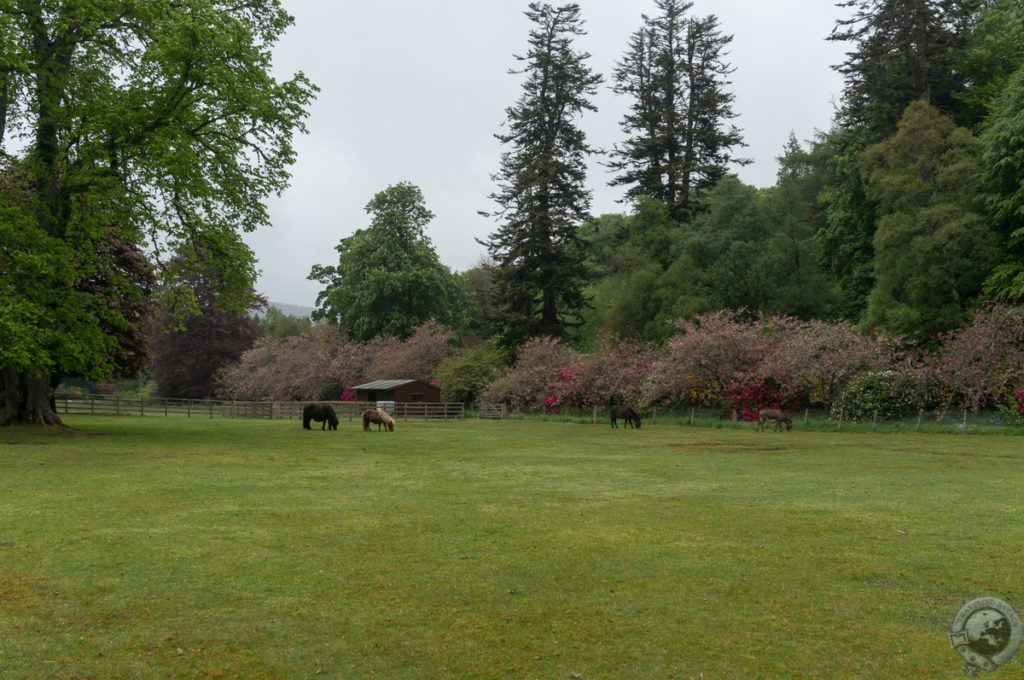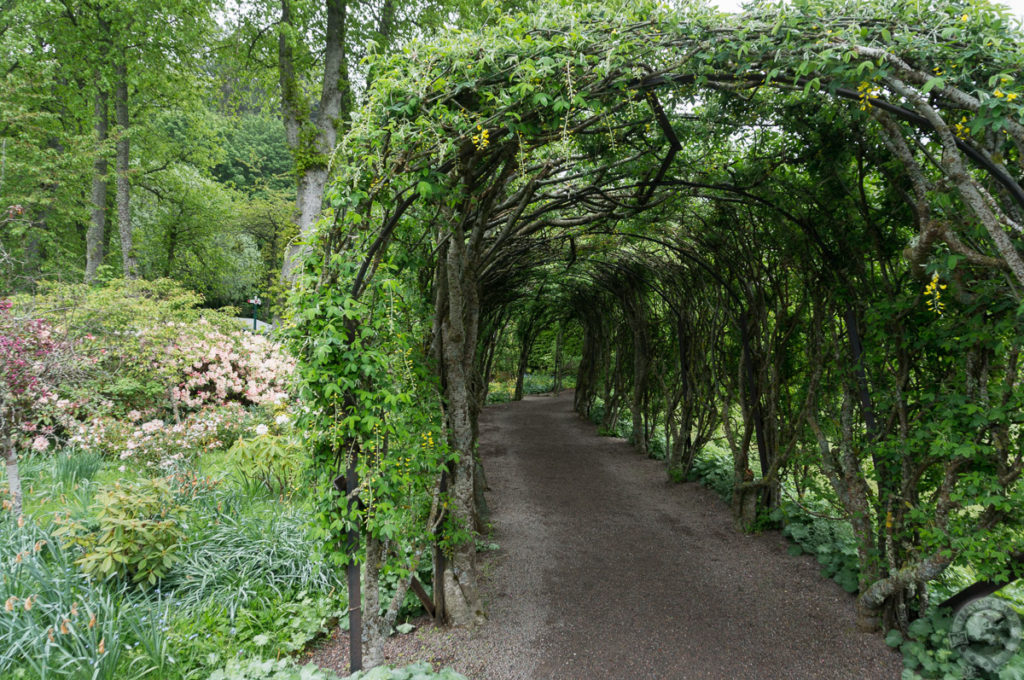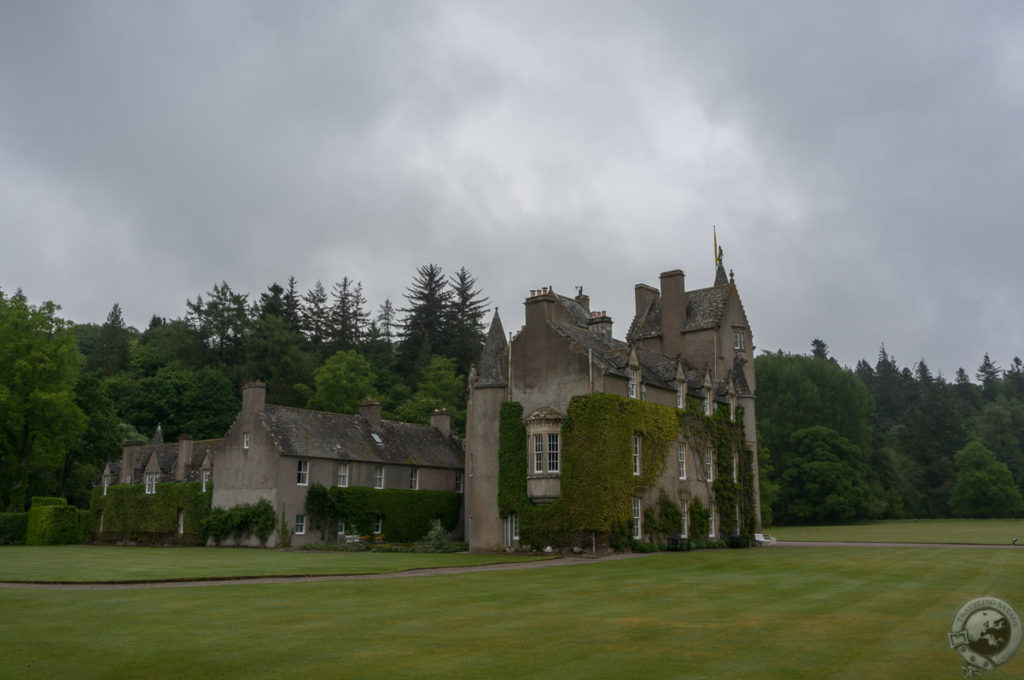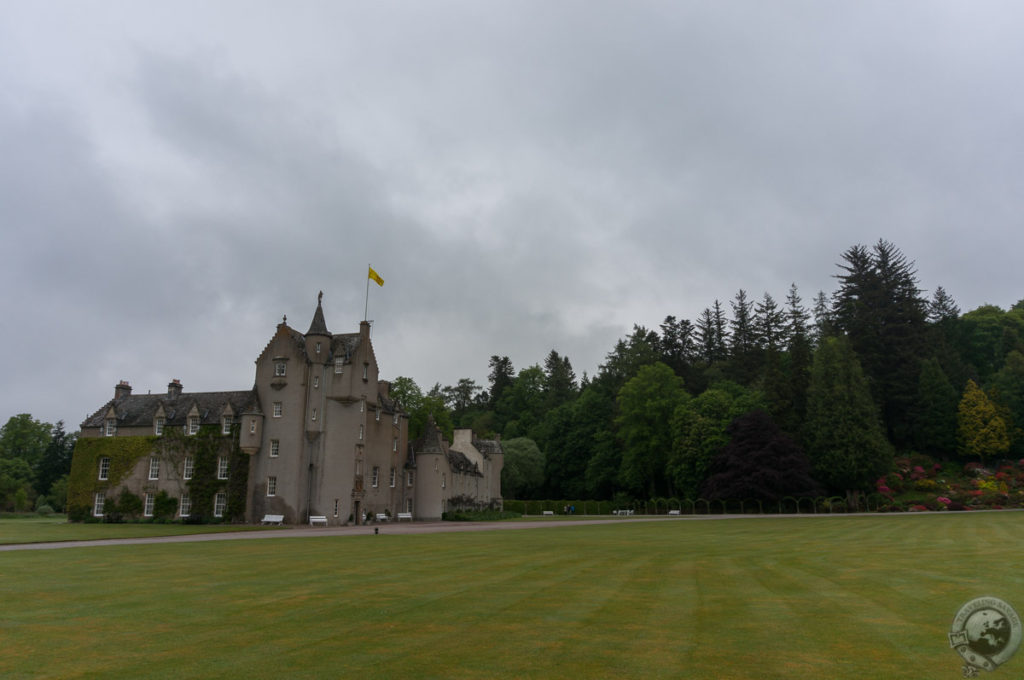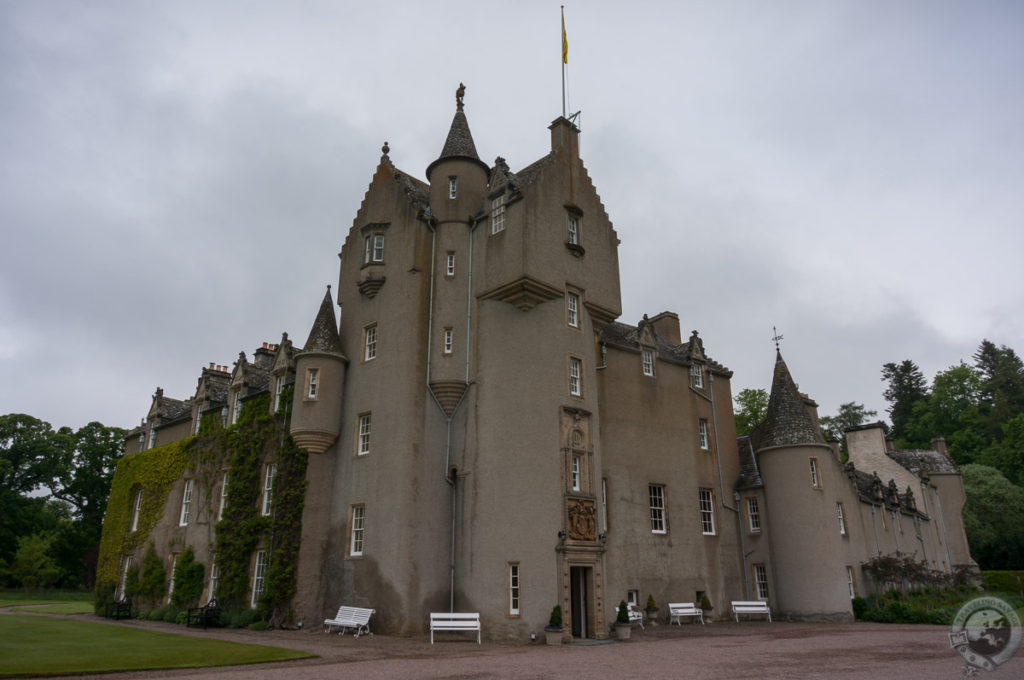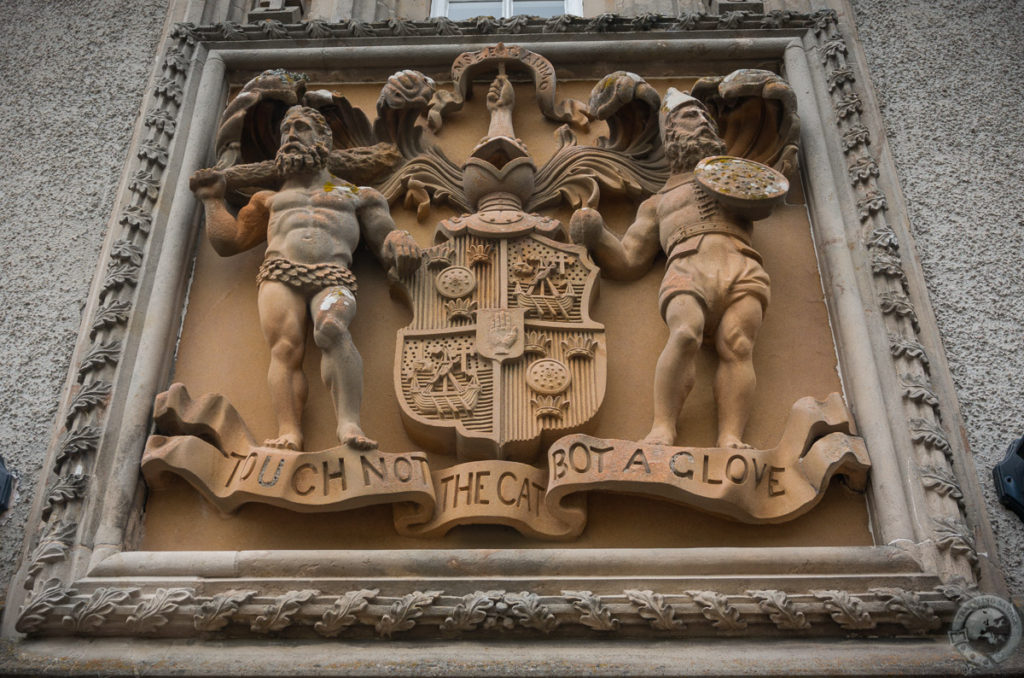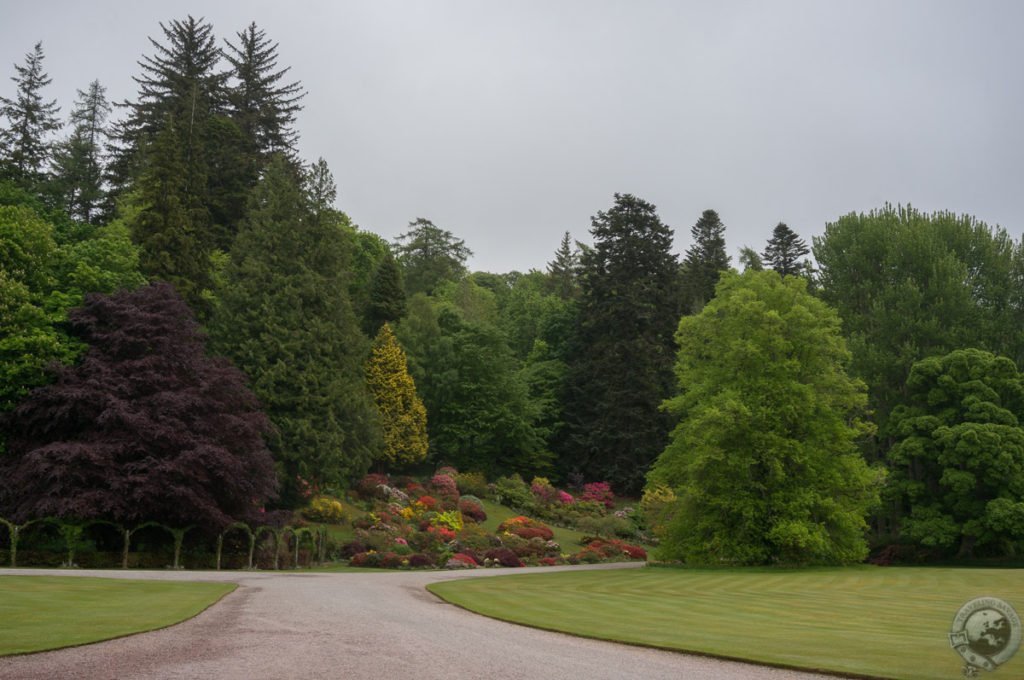The heart of Scotland’s Speyside region mirrors the A95 between its divergence from the A9 and the town of Keith to the northeast. This is a truly beautiful stretch of winding riverland north of the Cairngorms National Park. Of course the big draw here are the 50+ distilleries turning this Spey water into aged gold, but beyond the natural beauty lies deep historical roots. Nestled in a crook of the Spey by Cragganmore distillery lies a great example: Ballindalloch Castle and Gardens.
The drive northeast along the A95, or better yet the B9102, is peaceful and lush with pretty towns like Dulnain Bridge, Grantown-on-Spey, and Cromdale. Sarah and I loved this area so much we spent part of honeymoon here in 2007. This was when I first visited Ballindalloch Castle, and as we wandered the castle’s grounds we encountered Lady MacPherson-Grant herself, lady of the house.
I returned in 2018 and remembered that Ballindalloch castle is incredibly unusual. The castle was finished in 1546 by the MacPherson-Grants and has been that family’s residence every since. Perhaps there is no greater testament to a family’s enduring strength and ingenuity than a functioning, lived-in, 21st Century castle that escaped the depredations of clan rivalry, multiple Jacobite uprisings, and taxation’s crushing weight over the span of five centuries.
As this is a private residence, pictures were not allowed inside the castle so I’m treating you to an array of striking exterior shots. The original castle was a classic Z-plan fortress with a three-storey tower and a pair of round towers tucked into the nook where the rivers Spey and Avon join. Given the strife of the time in which Ballindalloch Castle was built, this is a curious siting for a castle as it doesn’t take advantage of high ground, but local legend has it that John Grant, the original builder, was instructed by a “demonic” voice to build the castle on the cow meadow. Is this what one would call infernal intervention?
The ensuing centuries held multiple renovations and additions to expand Ballindalloch Castle’s footprint. The walls were breached twice, once by the Marquis of Montrose in 1645 and once by the Muckle Spate, a great thunderstorm in 1829 that overflowed the River Spey and sent a flood through the outer walls and into the castle’s vaulted passages. The castle has steadily modernized to keep it a comfortable family residence, and looking upon its ivy-draped walls and large dormer windows you get a sense of deliberate whimsy.
The interior of the castle is lavish with an especially gorgeous dining room and a nostalgic ‘highland tower.’ Some report seeing a ‘Green Lady’ in the dining room at times, an apparition of a long-departed family member. While I missed her on my visit, I did note the large collection of important 17th Century Spanish paintings hung throughout the abode. The wine cellar beneath the original 16th Century castle was once the dungeon, and some say James Grant still walks the halls of this, his favorite room in the castle.
Clan MacPherson’s motto hangs over the entrance: Touch not the cat bot a glove. This is a warning to watch for the claws of a wildcat, a cunning and secretive beast that can still be found in Scotland’s highlands. Perhaps it’s this spirit that has keep Ballindalloch Castle thriving in the original stewardship of the MacPherson-Grants.
While whisky is assuredly a top priority in Speyside, Ballindalloch ought to be sharing the top of the to-do list. It is truly a spectacular castle with gorgeous grounds (and a distillery nearby, but more on that in a future post).

